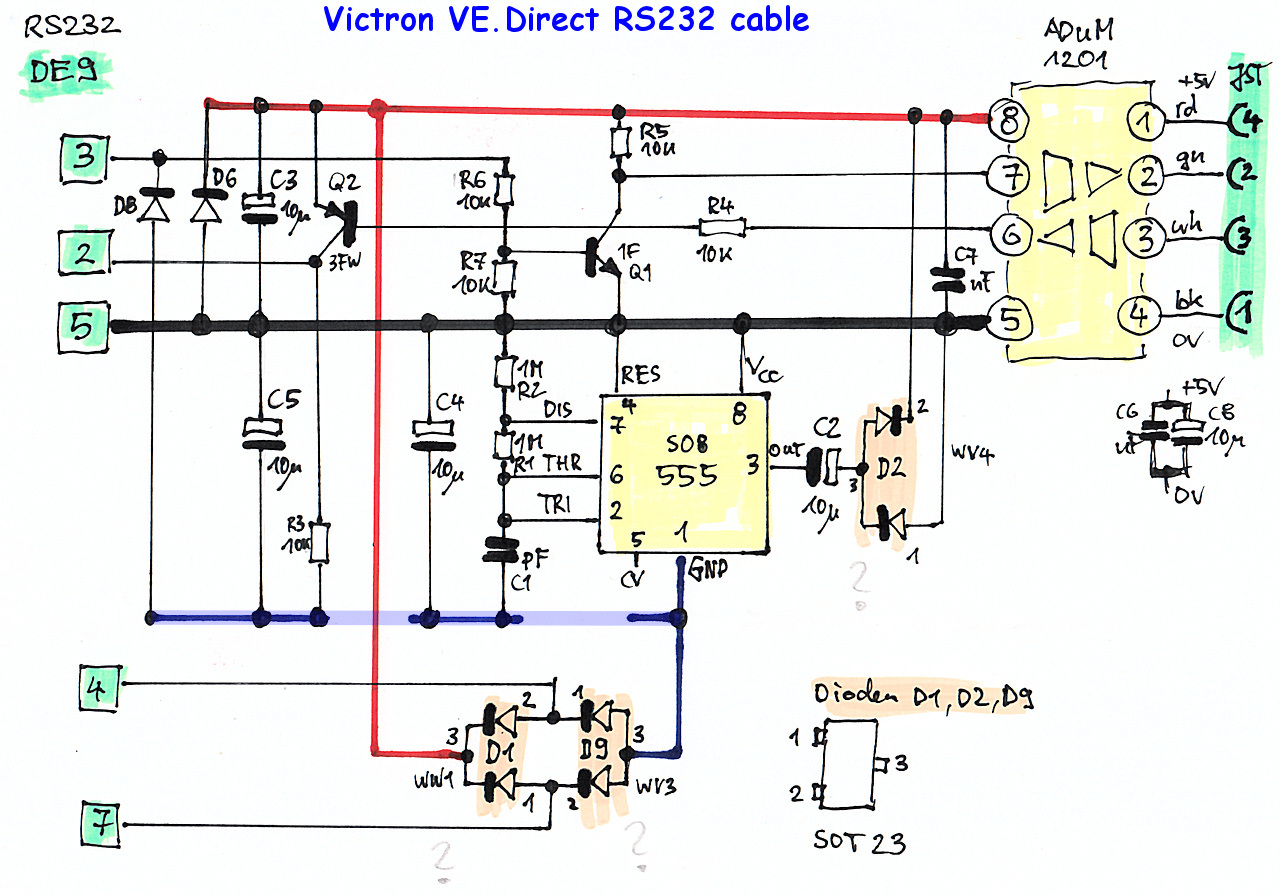What I'm trying to do:
Connecting an RS232-Eth converter (HyFlying Elfin EE10) to a SmartSolar MPPT 100/20 to be able to read out the status via Ethernet. The RS232-Eth converter works as I tested it with 2 terminal sessions and an RS232-USB converter.
Please note that the EE10 only has got RX, TX and GND, no DTR or RTS signals/lines.
What worked:
VE.Direct RS232 cable connected to an RS232-USB converter and then reading the unit with the Victron Connect application on a windows machine (also works with the VE.Direct-USB cable).
This also gives me the data via a terminal window every couple seconds..
What failed and broke my cable..
When I connected the VE.Direct RS232 cable to the EE10 I naturally need to supply the RS232 isolated side with power.. as there are no RTS/DTR lines I used the same power I was powering the EE10 with (same Ground).. 12Vdc and connected it to DTR (pin4 on the VE.Direct RS232 cable) as per the FAQ (https://www.victronenergy.com/live/vedirect_protocol:faq):
"When using an external power supply to power DTR or RTS, the minimum voltage is 5V, and maximum is 12V. Note that it is normally not necessary to use an external power supply for this: normal serial ports will either automatically drive DTR or RTS high. And if not that, than you can control those pins to be high from within the software."
The VE.Direct RS232 cable stopped working after that.
I'm currently re-engineering the circuitry on that board that is in the DB9 connector housing as several of the tiny diodes must have failed and seem to have burned through. Further, there doesn't seem to be any voltage converter in there, which means both the ADuM1201AZR and LM555CM SOIC-8 chips must have dealt with the 12Vdc - ouch. The ADuM1201AZR per datasheet is only capable of 7Vdc absolute maximum. So I'm pretty confident that I shot this chip on the RS232 side. The TTL side (MPPT charger) didn't get harmed luckily.
The circuitry in that cable doesn't make sense to an electronics engineer that I asked for help in identifying what went wrong. Per his opinion the version I got was lucky to have worked at all as the wiring in there is just plain odd/incomplete/unusual.
The pcb has this code on it: VE / REV-1 / 6-08 / 08204
I have another VE.Direct RS232 cable on order that should arrive with me in about 14 days or so (FNQ, Australia) which I will have inspected before I do anything with it. I also ordered some isolating RS232-TTL conversion connectors from Aliexpress which will take over a month to reach me.. they use a similar isolation chip but use a different powering regime and take a common rs232-TTL level shifter circuit.
https://www.aliexpress.com/item/32846014060.html
So what do I do now about the broken VE.Direct cable I got here (or the parts of it).
Do I get a replacement? Not sure I'd want one though, by how it's built on the inside. For what I need it it's probably useless unless I stay with powering it below 6Vdc or so.. and even then I'm not convinced of it being designed properly.
:-(

 This is the circuitry of the pcb that's in the DB9 housing (99% confident).
This is the circuitry of the pcb that's in the DB9 housing (99% confident).
